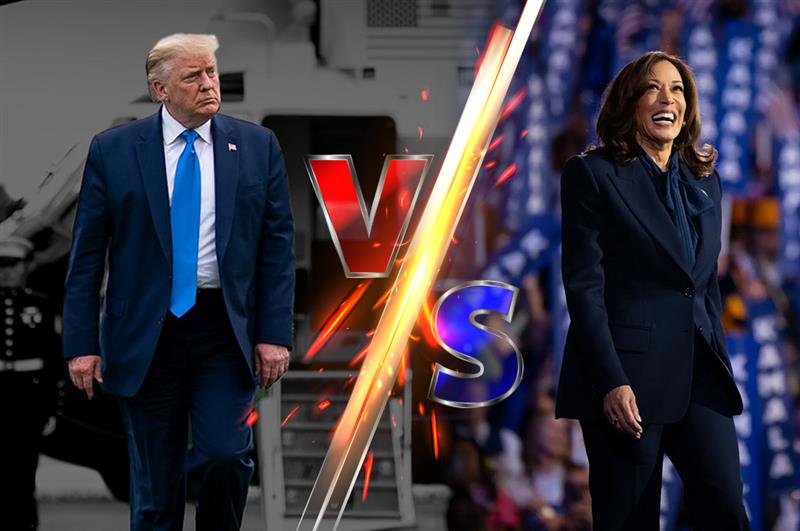Headline: The Trump-Harris Divide: Implications for U.S.-Asia Textile Trade
As the U.S. presidential election approaches, the stark divide between Donald Trump and Kamala Harris may significantly influence the future of U.S.-Asia textile trade. With the textile industry serving as a barometer for economic relations, stakeholders are keenly observing the candidates’ positions. Experts suggest that understanding these dynamics is crucial for businesses and investors involved in this sector. Unfolding political narratives will dictate the economic landscape, and the textile trade is no exception.
Who’s Who in the Election Landscape
On one side, Donald Trump represents the Republican stance with a promise of "America First," which has historically indicated a potential for placing tariffs and trade barriers that could impact Asian textile manufacturers. On the other hand, Kamala Harris is anticipated to adopt a more multilateral approach, fostering relationships with Asian countries like India, Vietnam, and Bangladesh, which are key players in the textile market.
According to a recent article from Nikkei Asia, investors are wary of what a “Trump 2.0” might entail, especially amidst an influx of political uncertainties reflected in tight election polls. This concern emphasizes the unpredictable trajectory U.S.-Asia trade relations may take depending on the election outcome.
Analyzing the Current Trade Landscape
Textile Industry Background
The U.S. textile market is heavily dependent on imports from Asia, with countries like China and India leading the way in supplying fabrics and finished goods. The $70 billion U.S. textile industry not only provides employment but also plays a vital role in global supply chains. The upcoming election serves as a tipping point for how trade policies may shift in favor of or against these international partnerships.
Key Issues at Stake
-
Tariffs and Import Policies: A Trump administration could reinstate or heighten tariffs on textile goods, a strategy previously aimed at protecting American jobs but criticized for its impact on consumers and industries reliant on Asian imports.
- Trade Agreements: Kamala Harris’s potential administration might pivot towards renegotiating existing trade agreements, enhancing collaborations with ASEAN nations, and prioritizing sustainable textile manufacturing practices.
Insights from Industry Experts
According to an analysis by Fibre2fashion.com, “The outcome of the U.S. election could create a dual pathway for the textile sector—one that continues the defensive economic posture under Trump, or one that opens avenues for cooperation under Harris.”
Expert opinions suggest that the preferences of U.S. retailers and manufacturers will also sway based on consumer trends favoring ethical sourcing. As noted by a representative from the American Apparel and Footwear Association, “The future of textile trade will depend on who can balance cost management with ethical production.”
Global Perspectives: Impact on Asia
Implications for Asian Markets
The region’s textile businesses are preparing for possible upheaval post-election. Reports from The Straits Times suggest that a highly divided U.S. policy approach could strain existing relationships, especially considering the increased reliance on quick turnarounds and adaptability in textile manufacturing, which are essential under pressures of global supply chain disruptions.
Environmental & Ethical Considerations
Additionally, there is a growing emphasis on sustainability in the textile industry. Regardless of who wins, high ethical standards in manufacturing are likely to remain crucial to maintain competitiveness. Industry insiders believe that either administration’s policies could enhance or hinder progress towards more sustainable practices.
The Road Ahead for Textile Trade
In light of these developments, companies engaged in the U.S.-Asia textile trade should consider the following steps:
- Risk Assessment: Evaluate potential tariff impacts and plan strategies around them.
- Supply Chain Diversification: Explore alternative sourcing options within Asia to mitigate risks associated with single-market reliance.
- Engagement with Policymakers: Foster connections with industry associations to advocate for favorable trade policies that support ethical practices in manufacturing.
Join the Conversation
The stakes are undeniably high as we approach the U.S. presidential election. Understanding the potential implications of the Trump-Harris divide on the textile industry is essential for informed decision-making by businesses and consumers alike. What are your thoughts on how these political dynamics will shape the future of U.S.-Asia textile trade? Share your insights in the comments below or join the discussion on our social media platforms.
For further reading on how trade policies shape the textile industry, visit Fibre2fashion.com and CNA for ongoing coverage.
Image and Multimedia Elements
<img src="https://example.com/image.jpg" alt="Textile Industry Trade" />Stay tuned for further updates as the election date approaches, and brace for the ramifications this electoral contest may bring to the textile landscape.

